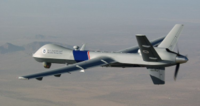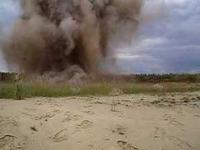-
Senate panel’s report harshly criticizes role, utility of DHS fusion centers
A 2-year bipartisan investigation by the U. S. Senate Permanent Subcommittee on Investigations has found that DHS efforts to engage state and local intelligence “fusion centers” has not yielded significant useful information to support federal counterterrorism intelligence efforts; the report says that senior DHS officials were aware of the problems hampering effective counterterrorism work with the fusion centers, but did not always inform Congress of the issues, nor ensure the problems were fixed in a timely manner; DHS estimates that it has spent somewhere between $289 million and $1.4 billion in public funds to support state and local fusion centers since 2003 (the report says that these are broad estimates which differ by over $1 billion); the Senate investigation raises questions about the value this amount of funding and the contribution the fusion centers make to the U.S. counterterrorism efforts; not everyone agrees with the report; Rep. Peter King (R-NY), chairman of the House Committee on Homeland Security, said: “I agree with Chairman Joe Lieberman and Ranking Member Susan Collins [of the Senate Committee on Homeland Security] that the subcommittee report issued this week paints with too broad a brush an incomplete picture that fails to recognize many of the important contributions that fusion centers have made in securing our Homeland”
-
-
Oregon terrorism suspect’s request to learn identity of government informant rejected

Mohamed Mohamud, a 21-year old Somali born Oregon resident, is accused of attempting to bomb Portland, Oregon’s 2010 holiday tree-lighting ceremony; a request by Mohamud and his defense team to learn the true identity of a government informant known only as “Bill Smith” was denied by U.S. District Judge Garr King
-
-
Keeping safe during earthquakes? There’s an app for that
The American Red Cross released its official earthquake application for iPhone and Android smartphones; the app is free, available in English or Spanish; the app includes earthquake epicenter locations, impact magnitudes, and local geographical impact data provided by the U.S. Geological Survey; it also includes a “shake zone” impact map and a one touch “I’m safe” messaging
-
-
Former L-3 employee guilty of selling weapon secrets to China

A federal court judge in Newark, New Jersey convicted Sixing Liu on six counts of violating the Arms Export Control Act as well as possessing stolen trade secrets, transporting stolen property, and lying to federal agents; Liu is was convicted of stealing thousands of electronic files detailing performance and design of guidance systems for missiles, rockets, target locators, and unmanned aerial vehicles in 2010
-
-
Explosives dumped into Gulf of Mexico pose big problems
Millions of pounds of unexploded bombs and other military ordnance that were dumped decades ago in the Gulf of Mexico, as well as off the coasts of both the Atlantic and Pacific oceans, could now pose serious threats to shipping lanes and the 4,000 oil and gas rigs in the Gulf, warns two oceanographers
-
-
Law enforcement can store, identify millions of voice samples using new software

Everyone this day can be identified by a fingerprint, DNA, or even a picture. Now, with the help of a Russian company, the FBI will soon be using voice recognition to identify people; the FBI says voice biometrics will be a “reliable and consistent means of identification for use in remote recognition”
-
-
Technology soon to make drones deadlier, more autonomous

Unmanned aerial vehicles (UAVs) have become America’s main weapon in the campaign against terrorists — at the forefront are the Predator and the Reaper — and technological changes would soon make them even deadlier; in the next decade drones will be faster and carry more weapons than today’s versions; they will also have better sensors and more sophisticated computers, allowing them to plan and execute attacks with little human participation
-
-
Why common explosive sometimes fails

The explosive PETN has been around for a century and is used by everyone from miners to the military, but it took new research by Sandia National Laboratories to begin to discover key mechanisms behind what causes it to fail at small scales
-
-
Harvesting fuel for the fleet from seawater

Refueling U.S. Navy vessels, at sea and underway, is a costly endeavor in terms of logistics, time, fiscal constraints, and threats to national security and sailors at sea; in Fiscal Year 2011, the U.S. Navy Military Sea Lift Command, the primary supplier of fuel and oil to the U.S. Navy fleet, delivered nearly 600 million gallons of fuel to Navy vessels underway, operating fifteen fleet replenishment oilers around the globe; the Naval Research Laboratory believes there is a better way: extracting carbon dioxide (CO2) and producing hydrogen gas (H2) from seawater and then catalytically converting the CO2 and H2 into jet fuel
-
-
Wearable map-creating device to help first responders
A wearable sensor system automatically creates a digital map of the environment through which the wearer is moving; the system is envisioned as a tool to help emergency responders coordinate disaster response
-
-
Maryland rolls out public safety interoperable communication system
To be better prepared for man-made or natural disasters, Maryland leaders have decided to develop Twelve Core Capacities for Homeland Security, picking the deployment of an interoperable communications system as the highest priority; on 5 June 2012, Governor Martin O’Malley inaugurated the state’s new network, known as the Maryland First Responders Interoperable Radio System Team (Maryland FiRST)
-
-
Raytheon Aerostat, SM-6 missile work together to protect ships
As tensions continue to rise over Iran’s nuclear weapons program, and the likelihood of military action to stop Iran from acquiring nuclear weapons increases – military action which would place U.S. ships in the Persian Gulf and the Indian Ocean at risk — there is good news from Raytheon: soon the seas may be a little safer
-
-
Critics: U.S. not doing enough to combat domestic terrorism

The effectiveness of the U.S. campaign against al Qaeda and its affiliates may have reduced the threat of foreign terrorists launching attacks on targets in the United States, but the threat of terrorism the United States is facing has not been reduced owing to the rise in domestic terrorism
-
-
LAPD wants to know why you are taking these photos
If you live in Los Angeles and decide to take some pictures of a few monuments or public places to send to friends and family or for your own private collection, the Los Angeles Police Department (LAPD) may see you as a potential threat to public safety
-
-
German police wants to develop its own computer surveillance software
The Federal Police Office of Germany (also known as the BKA) is looking to hire software engineers who can develop computer surveillance technology for use by law enforcement and intelligence agencies in criminal investigations
-
More headlines
The long view
Why Ukraine’s AI Drones Aren’t a Breakthrough Yet
By David Kirichenko
Machine vision, a form of AI, allows drones to identify and strike targets autonomously. The drones can’t be jammed, and they don’t need continuous monitoring by operators. Despite early hopes, the technology has not yet become a game-changing feature of Ukraine’s battlefield drones. But its time will come.
